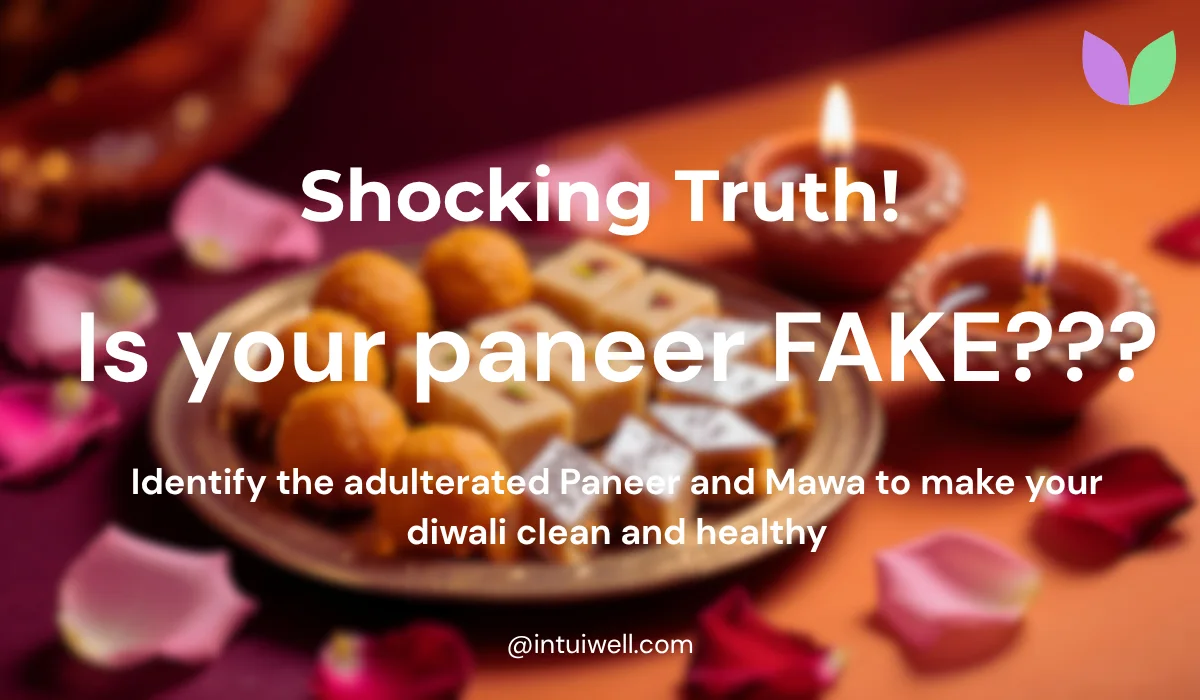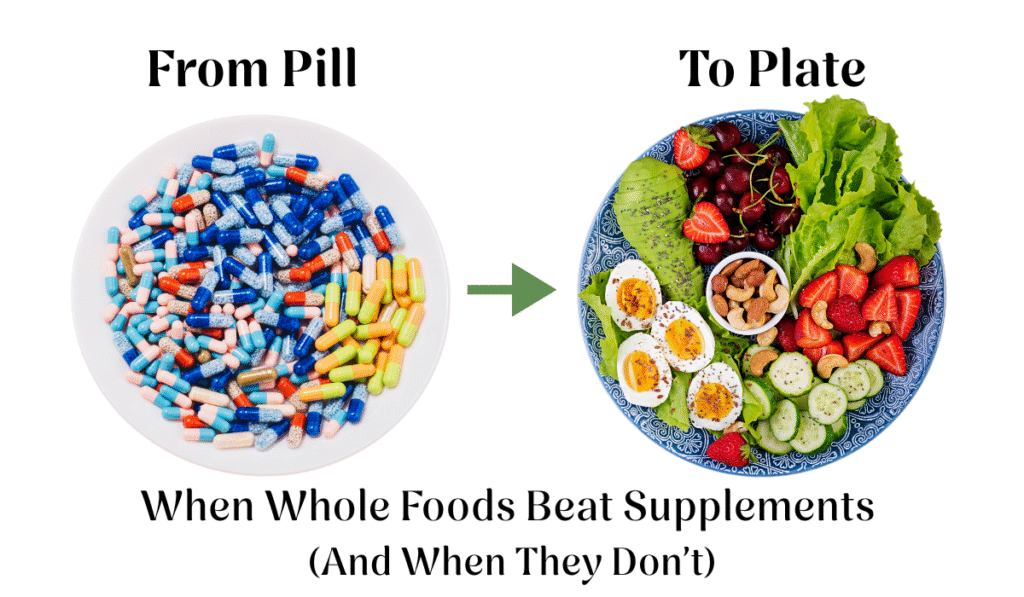How to Identify Fake Mawa and Paneer this Diwali
Festivals like Diwali bring joy, togetherness, and of course, sweets. But amid the festive rush, adulteration in ingredients like mawa (khoya) and paneer is at its peak. These are the base of most Indian sweets, and fake or adulterated versions can cause more harm than you think, from digestive distress to long-term toxicity.
Here is how you can identify real from fake before these festive treats reach your plate.
Why Mawa and Paneer Are Commonly Adulterated
- High demand during Diwali: Short supply leads to cheaper imitations.
- Cost factor: Unscrupulous vendors mix starches, detergents, or synthetic milk solids to increase quantity.
- Shelf life: Fake mawa and paneer often contain added chemicals to maintain their appearance for longer.
How to Identify Fake Mawa (Khoya)
- Texture Test
Pure mawa feels grainy yet soft.
Adulterated mawa feels sticky or rubbery due to the presence of starch or synthetic milk solids. - Smell Test
Natural mawa smells mildly sweet and milky.
Fake mawa often has an artificial or detergent-like smell, sometimes even sour if made from spoiled milk. - Water Test (at home)
Take a small piece of mawa and drop it in a glass of water.
Pure mawa will not dissolve easily and will settle at the bottom.
Adulterated mawa with starch will begin to disintegrate and make the water cloudy. - Iodine Test for Starch (simple kitchen test)
Mix a small piece of mawa in water, strain it, and add a few drops of iodine solution (available in first-aid kits).
If the color turns blue or black, it contains starch, which is a clear sign of adulteration.
How to Identify Fake Paneer
- Hot Water Test
Put a small cube of paneer in hot water for 10 minutes.
Pure paneer stays firm.
Adulterated paneer breaks easily or leaves a greasy or oily layer on the surface. - Texture and Color
Pure paneer is off-white, with a slightly crumbly but moist texture.
Fake paneer, often made from starch or synthetic milk, is rubbery, overly white, and bounces back when pressed. - Smell and Taste
Pure paneer has a fresh dairy aroma.
Adulterated paneer may smell sour, soapy, or have a chalky aftertaste. - Simple Vinegar Test for Detergent
Mix a small amount of paneer in warm water and shake well.
If foam appears, it may contain detergent.
The Best Solution: Make It at Home
With just a little time and effort, you can make pure, fresh mawa and paneer in your own kitchen. This ensures no preservatives, no chemicals, and complete control over quality.
Homemade Mawa (Khoya)
You need:
- 1 litre of full-fat milk
- A thick-bottomed pan
Method:
- Pour milk into the pan and bring it to a boil.
- Lower the flame and keep stirring continuously to avoid sticking.
- Continue simmering until the milk thickens, reduces, and leaves the sides of the pan, forming a dense, grainy mass.
- Once it reaches a soft dough-like consistency, turn off the flame and let it cool.
Tips:
- Always use full-fat cow or buffalo milk.
- Stir often and scrape the sides to prevent burning.
- Store in the refrigerator and use within two to three days.
Time required: About 45 to 60 minutes
Quick version: Heat milk powder, milk, and ghee in a 2:1:1 tablespoon ratio until it forms a soft dough-like consistency.
Homemade Paneer
You need:
- 1 litre of full-fat milk
- 1 tablespoon lemon juice or vinegar
- Muslin or cheesecloth
Method:
- Boil the milk in a heavy pan.
- Once it boils, lower the flame and add lemon juice or vinegar slowly while stirring.
- The milk will curdle; let it sit for two to three minutes.
- Strain using a muslin cloth and rinse with cold water to remove the sourness.
- Tie the cloth and hang it for 30 minutes to drain excess water.
- Press with a weight for one hour if you want firm paneer.
Tips:
- Use fresh milk, not UHT (tetra pack) milk.
- Rinse immediately after curdling to avoid a sour taste.
- Adjust firmness by controlling the draining time.
Time required: 20 to 25 minutes
Variation: Add a pinch of turmeric or herbs to make festive yellow or flavored paneer cubes for snacks or sweets.
Health Risks of Adulterated Mawa and Paneer
- Digestive irritation, bloating, and nausea
- Food poisoning due to synthetic chemicals
- Long-term impact on liver and kidney health if consumed repeatedly
Smart Buying Tips for Diwali
- Buy from trusted, reputable dairies or brands.
- Avoid sweets that look too white, shiny, or oily.
- Prefer freshly made sweets over pre-packed ones.
- Store them in the refrigerator and consume within one or two days.
Festive indulgence should bring joy, not health risks. This Diwali, choose purity by checking your ingredients carefully or making your own. Homemade mawa and paneer require only a little effort but ensure that every bite is safe, nourishing, and full of authentic flavor.
Let your Diwali sweets be made with care, not chemicals.
Summary: How to Identify Fake Mawa and Paneer This Diwali
During Diwali, demand for sweets skyrockets — and so does the risk of food adulteration. Mawa (khoya) and paneer, the core ingredients in most festive desserts, are often mixed with starch, detergents, or synthetic milk solids to cut costs and extend shelf life. Consuming these adulterated versions can lead to digestive issues, food poisoning, and long-term organ damage.
To protect your health, use quick at-home tests:
- For mawa: Try the texture, smell, water, or iodine test to detect starch and synthetic additives.
- For paneer: Perform the hot water, texture, smell, and vinegar foam tests to check purity.
The safest route? Make your own. Homemade mawa and paneer take under an hour and guarantee purity, freshness, and authentic taste — without preservatives or chemicals.
This Diwali, choose quality over convenience. Let your sweets bring health and happiness, not harm.
FAQs
- Why is mawa or paneer adulterated during Diwali?
Because demand is high and supply is limited. Vendors use starch, detergents, and synthetic milk solids to increase quantity and shelf life cheaply. - Can adulterated mawa or paneer cause serious health issues?
Yes. Beyond mild digestive problems, repeated consumption can harm your liver and kidneys due to chemical additives. - What’s the simplest home test for fake mawa?
The iodine test — if the solution turns blue or black, it contains starch and is adulterated. - How can I tell if paneer is fake without chemicals?
Drop a cube in hot water for 10 minutes. Pure paneer stays firm; fake paneer breaks or leaves an oily film. - How long can homemade mawa and paneer be stored?
Mawa lasts 2–3 days, and paneer lasts up to 2 days in the refrigerator. Always store in airtight containers. - Is store-bought paneer from big brands safe?
Generally safer than unbranded local options, but always check freshness, color, and smell before use.
Want to learn more about eating clean and protecting your health this festive season?
👉 Read our other blogs on nutrition and diet — packed with practical insights, food safety tips, and smart eating habits to keep you healthy year-round.



